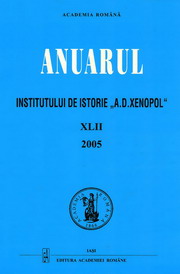CONSIDERAŢII REFERITOARE LA REGIMUL JURIDIC AL MĂNĂSTIRILOR PERSONALE DIN MOLDOVA (SECOLELE XV-XVI)
CONSIDERATIONS ON THE JURIDICAL REGIME OF PERSONAL MONASTERIES IN MOLDOVIA (15th-16th CENTURIES)
Author(s): Iulian Marcel CiubotaruSubject(s): History
Published by: Editura Academiei Române
Summary/Abstract: This study investigates, based on documents kept, the charisticariat phenomenon in medieval Moldovia, process by which the Church has sanctioned the existence of personal monasteries, that could be given to secular persons, inherited, divided with the village or mill around which there were, sold or even confiscated in case of treason (representative of this point of view is the case of Trestiana Monastery). The documents issued by the office of Moldovia in the 15th and 16th centuries attests many cases of charisticariat, among the most famous being the Vişnevăţ Monastery, given by Alexander the Good, at 1429, to his wife. This phenomenon was first developed in Byzantium, but has ceased to exist because some emperors, under the influence of the Church, have issued laws (novele) in this sense. In Moldovia, the charisticariat appeared in the time of Alexander the Good, peaked during Stephen the Great, and then gradually disappeared from the specific customs of this area, because its practice was an abuse of the right of founding. The last case of charisticariat in Moldovia identified is from 1581, in this year dating a document by which Condrea Bucium, with his wife, becomes the owner of the Răcătău Monastery.
Journal: Anuarul Institutului de Istorie »A.D. Xenopol« - Iaşi
- Issue Year: LI/2014
- Issue No: Supl. 1
- Page Range: 95-113
- Page Count: 19
- Language: Romanian

